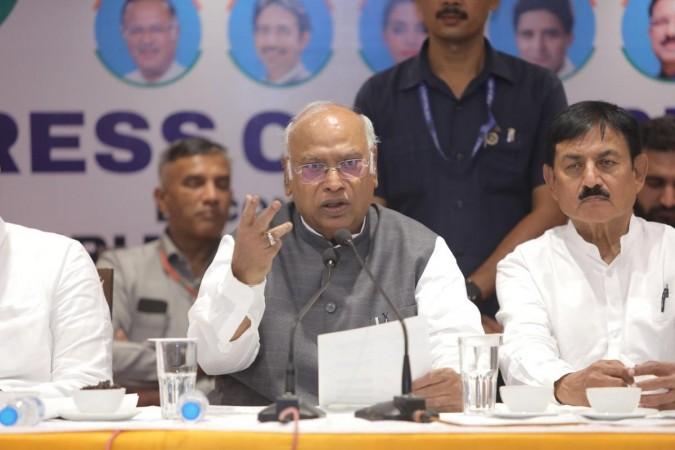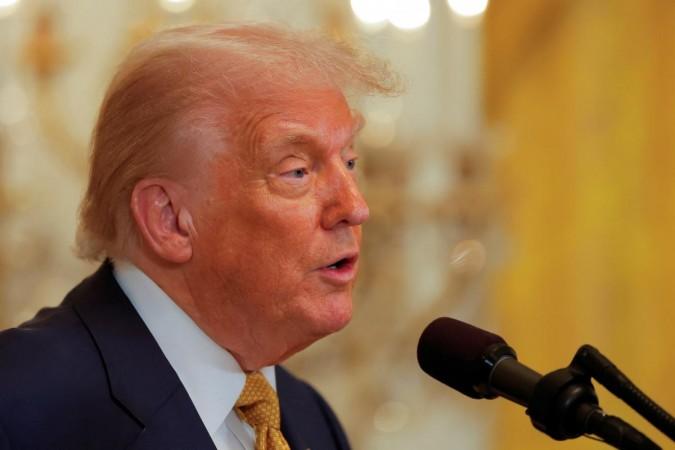
Congress President Mallikarjun Kharge has sharply criticised the Narendra Modi-led government following the United States' decision to double tariffs on Indian goods. This move, initiated by US President Donald Trump, has been described by Kharge as a "foreign policy disaster," which he insists cannot be attributed to the Congress party's governance over the past 70 years. The backdrop to this development is Trump's earlier imposition of a 25 percent tariff on Indian goods, which has now been increased to 50 percent.
Kharge, using the social media platform 'X,' emphasized India's commitment to its national interest and strategic autonomy, rooted in the ideology of non-alignment. He stated, "India's national interest is supreme. Any nation that arbitrarily penalizes India for our time-tested policy of strategic autonomy—rooted in the ideology of non-alignment—fails to understand the steel frame India is made of." Kharge's criticism extended to Prime Minister Modi's silence amidst the escalating rhetoric from the US.
He pointed out Trump's repeated claims of brokering a ceasefire, which he has publicly declared over 30 times, and Modi's inaction in response. Kharge also recalled Trump's remarks at the BRICS summit, where the US President allegedly threatened a 100 percent tariff on BRICS nations and declared the group "dead," while Modi, as Kharge noted, "sat there smirking."
Economic Implications and Government Response
The economic implications of the tariff increase are substantial. Kharge highlighted that India's exports to the US amount to Rs 7.51 lakh crore, and a 50 percent blanket tariff could translate to a potential economic burden of Rs 3.75 lakh crore. Sectors such as MSMEs, agriculture, dairy, engineering goods, electronics, gems and jewellery, pharmaceuticals, petroleum products, and cotton garments are expected to be hit the hardest.
Kharge further criticized the government's lack of action, stating, "Trump has been hinting at 'reciprocal tariffs' for months. Yet, the Union Budget made no provisions to cushion the blow. Your ministers have talked endlessly about negotiating a trade deal, some even camped in Washington — and still failed to secure anything." He added, "You've had more than six months. And now that Trump is intimidating and coercing us, you remain silent. This is a foreign policy disaster — and you can't even blame it on Congress this time."
In response, the Indian government has strongly objected to the latest tariff hike, describing it as "unfair, unjustified, and unreasonable." India maintains that its oil imports, including those from Russia, are guided by market needs and are essential for the energy security of 1.4 billion people. The controversy has been further fueled by Trump's accusations that India is indirectly aiding Russia's war in Ukraine by profiting from cheap Russian oil.

In a post on Truth Social, Trump alleged, "India is not only buying massive amounts of Russian oil, but they are also then, for much of the oil purchased, selling it on the open market for big profits. They don't care how many people in Ukraine are being killed by the Russian war machine." India, however, has rejected these accusations, insisting that its energy trade is based on sovereign policy and market dynamics.
The decision to increase tariffs comes at a time when Trump's special envoy, Steve Witkoff, was seen meeting Russian President Vladimir Putin in Moscow, raising questions about Washington's own diplomatic motives. On Tuesday, Trump had threatened additional tariffs on India within 24 hours. Although the deadline passed, the executive order was issued just hours later, escalating tensions between the two nations.
Meanwhile, foreign affairs expert Subhash Goyal has criticized Trump's decision to impose an additional 25 percent tariff on India over its purchase of Russian oil, warning that the move will damage trade ties and hurt both Indian and American consumers. Goyal emphasized the longstanding relationship between India and Russia and the importance of oil security for India's agriculture and transport sectors. He noted that the European Union also imports oil from Russia in significant quantities, yet sanctions are being imposed on India.
Goyal further highlighted the significant dependence of the US on Indian goods and services, particularly in the technology sector. He pointed out that many major US companies, including Microsoft, Google, and Apple, have substantial software development and manufacturing units in India. Goyal warned that America's actions could push India closer to Russia and China.
Analysts have also weighed in on the potential impact of the tariffs on the Indian economy. Bloomberg analysts Chetna Kumar and Adam Farrar have projected that the overall hit to GDP could be as high as 1.1 percent over the medium term. India's central bank projects a 6.5 percent GDP growth for the 2025-26 fiscal year, unchanged from the previous year but below the average 8 percent growth seen in earlier periods. A full percentage-point loss would mark a setback for one of the world's fastest-growing economies.
In the midst of these developments, India's trade minister, Piyush Goyal, has been actively engaging in negotiations with US counterparts to initiate a bilateral trade agreement. US Vice President JD Vance, during a meeting with Modi in New Delhi, indicated that both sides are making progress on trade talks. However, despite multiple rounds of discussions, a breakthrough has yet to be achieved.
The situation is further complicated by Trump's plans to impose a 100 percent tariff on computer chips, which could significantly increase electronics costs. This move is part of a broader strategy to exert pressure on countries perceived to be aligning with Russia.
Historically, trade tensions between the US and India have surfaced periodically, often influenced by geopolitical dynamics and economic policies. The current situation echoes past instances where trade policies have been used as tools of diplomacy and economic leverage. The ongoing developments underscore the complexities of international trade relations and the challenges of balancing national interests with global economic interdependencies.
As the situation unfolds, the implications for both the Indian and US economies remain uncertain. The potential for further escalation in trade tensions poses risks not only to bilateral relations but also to broader regional and global economic stability. The coming weeks will be crucial in determining the trajectory of these trade negotiations and their impact on the global economic landscape.

















